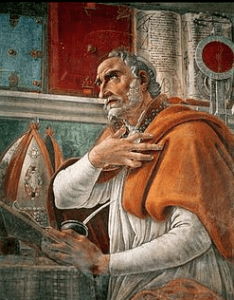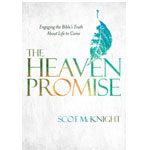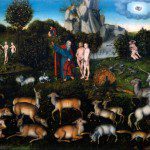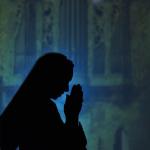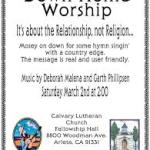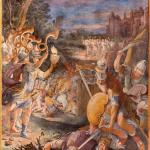 The first three interviews in Science and Religion: 5 Questions are with fairly outspoken skeptics of religion (something of a coincidence as the order is strictly alphabetical) – Simon Blackburn, Susan Blackmore, and Sean Carroll. The views they put forth are worth some consideration as these questions and concerns are raised by many others in our society. For each of them science is rather well defined – the empirically verified understanding of the nature of the material world, but religion is something of an enigma defined differently in each of the interviews. It is hard to nail the questions when religion can be anything from orthodox Christianity to a vague spiritualism or a natural sociological phenomenon. It is clear, however, that Christianity is generally in view.
The first three interviews in Science and Religion: 5 Questions are with fairly outspoken skeptics of religion (something of a coincidence as the order is strictly alphabetical) – Simon Blackburn, Susan Blackmore, and Sean Carroll. The views they put forth are worth some consideration as these questions and concerns are raised by many others in our society. For each of them science is rather well defined – the empirically verified understanding of the nature of the material world, but religion is something of an enigma defined differently in each of the interviews. It is hard to nail the questions when religion can be anything from orthodox Christianity to a vague spiritualism or a natural sociological phenomenon. It is clear, however, that Christianity is generally in view.
The five questions:
1. What initially drew you to theorizing about science and religion?
2. Do you think science and religion are compatible when is comes to understanding cosmology (the origin of the universe), biology (the origin of life and the human species), ethics, and/or the human mind (minds, brains, souls, and free will)?
3. Some theorists maintain that science and religion occupy nonoverlapping magisteria – i.e., that science and religion each have a legitimate magisterium, or domain of teaching authority, and these two domains do not overlap. Do you agree?
4. What do you consider to be your most important contribution(s) to theorizing about science and religion?
5. What are the most important open questions, problems, or challenges confronting the relationship between science and religion, and what are the prospects for progress?
Simon Blackburn is a British philosopher interested in the philosophy of the mind. In his view science and religion are compatible because the function of religion is to unite adherents into a moral community. The religious rites, rituals, and mysteries only exist to unite the tribe or congregation. Any religious group can teach specific views that are at odds with science – but this isn’t the core definition of religion. There is no inherent reason why the moral community need be at odd with the scientific understanding.
Gould’s suggestion of nonoverlapping magisteria is “a silly idea” because religion, in Blackburn’s view, has no teaching authority or domain of knowledge at all. After all, how can social glue have a legitimate domain of knowledge?
Blackburn also views the idea of any element of the supernatural as out of the question. A Divine Architect or First Cause gets us nowhere and has no influence on the world and no implications for our understanding of the world. Religion at its best (a non-dogmatic uniting principle) makes no ontological claims at all. Religion that makes ontological claims that include supernatural in any form (a being, a miracle …) is simply a product of human fancy serving to bind the group together. The supernatural is illegitimate luggage, the results of flights of fancy or the “uncritical reception of the views of some particular tribe of thousands of years ago.”
Susan Blackmore (a British freelance writer and lecturer and a visiting Professor of Psychology and one of only three women included in the book) is quite critical of Christianity. She grew up in the Church of England in a relatively religious family, but has moved away from any faith. In her view science and religion are not compatible (although the breadth of religion makes this a little fuzzy). As far as religion and biology are concerned the answer is an emphatic no.
As far as biology is concerned, science and religion are absolutely not compatible. In particular, this is true for Christianity, Islam, and any religion which specifies a God who made us.
I have particular anger and despair about the Christian notion that God created us in his own image. You could take a rather subtle spiritual sort of notion of what that means … it’s for God’s good qualities that we are made in his image. … But when you read the Bible or the Koran, you find that God encourages hostility to outgroups, glorifies war, approves of rape, and behaves in countless ways we find immoral today. He displays love and wrath, rejection and compassion, forgiveness and revenge in a soup of contradictions. All this may sum up our human failings rather well, but it is far from what Christians mean when they say we are made ‘in His image.’
A more down to earth meaning of ‘made in His image,’ entails what human beings look like, how our bodies are constructed and how we behave. The science of biology gives us answers. … Religion cannot provide any such meaningful answers.
… The Christian idea that we are made in God’s image is simply ridiculous. (p. 12)
Moving beyond the concept of image of God, there is the issue of purpose and plan. While Christianity and Islam suggests that there is a plan in creation, Blackmore sees evolution as a contingent process with no plan and no need for humans at all.
Ethics and religion are also incompatible in Blackmore’s view. “Religions are often touted as providing a moral compass for their followers, but the morality displayed in the Old Testament or in the Koran is mind-numbingly gruesome.” (p. 13) There is much more, but the gist is the same. Religion is a self-perpetuating human construct (a memplex in her view), not particularly useful except to bind groups together as somehow superior to others.
Blackmore begins her answer to the final question on challenges and prospects with reference to a bag she found for sale “Religion! Together we can find the cure.” She’s glad to be in England where belief in God doesn’t thrive.
Sean Carroll (an American physicist) is far less antagonistic, although he is unabashedly atheist. In his view the fundamental ontology of the world is naturalistic. This naturalism is a marvelously successful worldview and it should be spread more widely. This view guides his answers to all of the questions. As most religious believers think there is something other than the natural world, some kind of supernatural reality, science and religion are fundamentally incompatible. Gould’s nonoverlapping magisteria only work because Gould redefined religion into something that few religious people would see as religion.
Carroll’s view is internally consistent – because the natural world is all there is and atoms and molecules are inherently nonjudgmental, morality and ethics are human creations. There is nothing in nature that establishes meaning, responsibility, morality, or beauty. Nature simply is.
The lesson of naturalism is that matters of judgment are ultimately human creations. That leaves a lot of work for us to do – what rules of morality and meaning are the best ones to create? Different people will answer the question differently, and that’s okay. (It needs to be okay, since that’s how the world is.) But there is still a good deal of hard work to be done to invent the rules that satisfy our individual desires, as well as fitting in with the desires of others. Naturalism is an ambitious project, one that is still in its very early stages. I’m optimistic that human beings are on the road to getting it right. (p. 30)
Running themes. There are some running themes through these three interviews. The first is a fundamental belief in naturalism as the correct worldview. Any move beyond the purely natural is a flight of human fancy. This move can be benign, dangerous, or in Carroll’s discussion of ethics and meaning, it can be productive.
The second theme, seen in Blackburn and Blackmore although not in Carroll, is a rather unfortunate misunderstanding of the teachings of Christianity and the nature of the Old Testament. Blackmore, in particular, doesn’t seem to have a clear understanding of the image of God or, for that matter, most of the Old Testament (although some of the more biting statement may be fore rhetorical effect). Still – these kinds of statements come up quite often in conversations with those who are skeptical of Christianity. Books like Richard Middleton’s The Liberating Image and Iain Provan’s Seriously Dangerous Religion can help develop an understanding of the Old Testament that addresses the kinds of objections raised by Blackmore. Blackmore’s view of the image of God is nothing like that portrayed by these Old Testament scholars.
The third theme running through these interviews is a view of religion as a natural construct for creating social cohesion. All three see no place for fundamental truth in religion, any religion, beyond this function.
The next two interviews are with Christians – William Lane Craig and William Dembski. These interviews will shape the next post on this book.
For now …
How would you address the question of ontological naturalism?
What is the best argument for the existence of a supernatural element of reality?
What makes Christianity more than a construct for social cohesion?
Basically the important question is this: How do we convey the truth of Christianity to people who are (1) convinced of ontological naturalism, (2) think all religion is simply a social “glue” and (3) think the Old Testament is the morally questionable and scientifically absurd literature of an ancient tribe?
If you wish to contact me directly you may do so at rjs4mail [at] att.net
If interested you can subscribe to a full text feed of my posts at Musings on Science and Theology.






